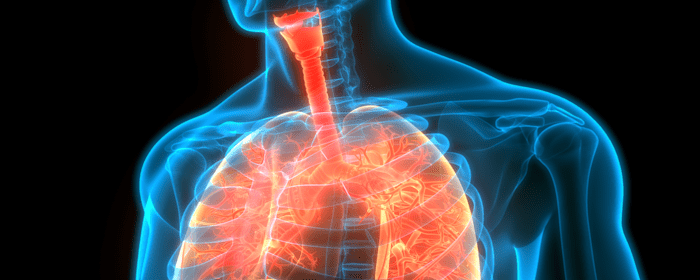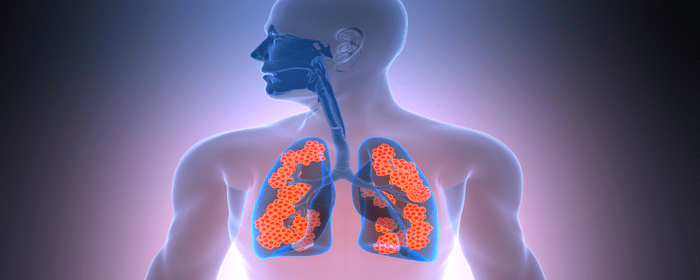
by admin | Aug 7, 2025 | Extracellular Vesicles, Pulmonary Fibrosis, Regenerative Medicine, Stem Cell Research, Stem Cell Therapy, Studies
Pulmonary fibrosis is a chronic and progressive lung disease marked by abnormal scarring of the tissue surrounding the air sacs. This process thickens and stiffens the lungs, leading to shortness of breath, fatigue, and reduced oxygen exchange.
Current medications, such as pirfenidone and nintedanib, can slow disease progression but do not reverse tissue damage. As a result, researchers are pursuing regenerative strategies that can modulate inflammation, suppress fibrosis, and promote repair.
One of the most promising emerging therapies involves extracellular vesicles (EVs) derived from mesenchymal stromal cells (MSCs). These nanosized, membrane-bound particles carry bioactive molecules—such as proteins, microRNAs (miRNAs), and metabolites—that influence immune responses and tissue repair. Importantly, MSC-EVs appear to replicate many benefits of stem cell therapy while avoiding the challenges of administering live cells, such as immune rejection or variable differentiation in vivo.
As part of this study, Li et al. examined the safety and efficacy of mesenchymal stromal cell–derived extracellular vesicles (MSC-EVs) from human umbilical cord (hUCMSC-EVs) in preclinical mouse models and in patients with pulmonary fibrosis.
Targeted Delivery Through Nebulization
Li’s research team developed a method for delivering hUCMSC-EVs via nebulization, producing a fine aerosol that can be inhaled directly into the lungs. This delivery route targets the site of disease, enhances local concentration, and minimizes systemic exposure.
In mouse models, fluorescently labeled hUCMSC-EVs rapidly accumulated in the lungs within hours of inhalation and persisted for several days, confirming targeted distribution. This lung-specific retention supports nebulization as a practical and efficient method for respiratory delivery.
Manufacturing and Quality Assurance
To ensure safety and consistency, the hUCMSC-EVs were produced under Good Manufacturing Practice (GMP) conditions using a standardized cell bank. Multiple critical quality control points were implemented throughout production, verifying vesicle size (50–400 nm), morphology, surface markers (CD9, CD63, CD81), and sterility.
Tests confirmed the absence of bacterial, viral, and mycoplasma contamination and validated biological activity through immune-modulating assays. Analysis of the vesicles’ RNA, protein, and metabolite content demonstrated high batch-to-batch reproducibility, underscoring their stability and reliability as a biologic product.
Molecular Composition and Mechanisms of Action
Comprehensive profiling revealed that microRNAs made up nearly 60% of the total RNA cargo within the hUCMSC-EVs, with over 1,400 unique miRNAs identified. Many are involved in regulating inflammation, cell differentiation, angiogenesis, and extracellular matrix remodeling—key pathways disrupted in fibrosis.
Proteomic analysis identified more than 1,000 proteins enriched in processes such as wound healing, cytoskeletal organization, and cell adhesion, while metabolomic profiling revealed over 100 metabolites related to amino acid and energy metabolism. According to the authors, these findings suggest that hUCMSC-EVs deliver a coordinated set of molecular signals that can reduce inflammation, inhibit fibroblast activation, and support tissue regeneration.
Preclinical Results in Pulmonary Fibrosis Models
Using the bleomycin-induced pulmonary fibrosis mouse model, the researchers assessed both safety and efficacy. Mice received various doses of nebulized hUCMSC-EVs, followed by imaging, physiological measurements, and histological evaluation.
The treatment significantly improved survival, restored lung volume, and reduced fibrotic lesions compared to control groups. Micro-CT scans showed reduced tissue density and less bronchial distortion, while histology confirmed preservation of alveolar architecture and decreased collagen accumulation.
Even when therapy began after fibrosis was established, hUCMSC-EVs slowed or partially reversed disease progression. Interestingly, moderate doses produced the most favorable outcomes, suggesting that efficacy may depend on optimizing dosage rather than simply increasing the quantity delivered.
Immune Modulation and Antifibrotic Mechanisms
Further analysis revealed that nebulized hUCMSC-EVs increased expression of miR-486-5p, a microRNA known to suppress inflammatory signaling and regulate macrophage behavior. Macrophages are central to the progression of pulmonary fibrosis: when activated into a pro-inflammatory (M1) state, they promote injury, while their alternative (M2) phenotype supports repair.
After EV treatment, Li et al. found that macrophages in the lung shifted toward an M2-dominant profile. This was accompanied by increased expression of antifibrotic and regenerative genes (IL-10, MMP13, HGF) and reduced levels of SPP1, a fibrosis-associated gene. These results indicate that hUCMSC-EVs exert their effects largely by reprogramming the immune environment, mitigating inflammation, and promoting resolution of tissue injury.
Phase I Clinical Trial: Safety and Feasibility
Following preclinical success, a randomized, single-blind, placebo-controlled Phase I clinical trial was conducted in 24 adults with pulmonary fibrosis confirmed by high-resolution CT imaging. Participants continued standard therapy; half received nebulized hUCMSC-EVs twice daily for seven days, and half received saline.
Safety was the primary endpoint. Throughout treatment and one year of follow-up, no serious adverse events, allergic reactions, or clinically significant laboratory abnormalities were observed. Blood counts, liver and kidney function, and inflammatory markers remained stable, confirming a strong safety profile for inhaled hUCMSC-EVs.
Early Clinical Indicators of Efficacy
Although designed primarily to assess safety, the study also collected exploratory measures of lung function and patient-reported outcomes.
Patients who received nebulized hUCMSC-EVs demonstrated notable improvements in forced vital capacity (FVC) and maximal voluntary ventilation (MVV) compared to the control group. Questionnaire scores also improved: St. George’s Respiratory Questionnaire results decreased, indicating reduced symptom burden, while Leicester Cough Questionnaire scores increased, reflecting improved quality of life.
Radiographic evaluation revealed stable disease in most participants, consistent with the short treatment duration, but two patients with post-inflammatory pulmonary fibrosis showed partial regression of fibrotic lesions on CT imaging. According to the authors, these cases highlight the potential for genuine structural recovery with this therapy.
Advantages of Nebulized Delivery
Nebulized administration offers several advantages for chronic lung diseases. Delivering therapy directly to the lungs ensures higher local concentrations and reduces systemic exposure, minimizing potential side effects. It also allows for noninvasive, repeatable dosing, which is more patient-friendly than intravenous infusion.
The preclinical biodistribution data align with these advantages, showing sustained lung localization with gradual clearance—an ideal profile for localized therapy in fibrotic lung disease.
Comparison with Other EV-Based Therapies
The study adds to a growing body of evidence supporting nebulized EVs as a safe and feasible approach for pulmonary diseases. Previous preclinical studies have shown benefits of EVs derived from adipose MSCs or platelets in models of emphysema and acute lung injury. However, hUCMSC-EVs may be uniquely advantageous due to their scalable production, immune compatibility, and consistent molecular content.
Current Limitations and Research Needs
Despite encouraging findings, several limitations remain. The Phase I study involved a small cohort and short treatment period. Larger, longer-term trials are necessary to evaluate sustained clinical benefit, dose optimization, and durability of effect.
Because EVs are complex biologics, their content can vary based on donor source and culture conditions. Ongoing work in standardization and molecular characterization will be critical to ensure reproducibility at scale. Future studies should also identify biomarkers to predict which patient populations—such as those with post-inflammatory fibrosis—may respond best to this therapy.
Clinical Implications and Future Outlook
For clinicians and researchers, hUCMSC-EVs represent an innovative, cell-free approach to addressing the underlying inflammation and scarring of pulmonary fibrosis. The therapy combines the biological sophistication of stem cells with the precision and safety of a targeted inhalation route.
Early evidence suggests that nebulized hUCMSC-EVs are not only safe but may improve lung function and quality of life when added to standard therapy. If validated in larger studies, this strategy could complement existing medications, offering patients a regenerative option that directly addresses tissue repair rather than symptom control alone.
Conclusion
According to Li et al., nebulized hUCMSC-EVs demonstrate strong potential as a next-generation therapy for pulmonary fibrosis. Produced under GMP conditions and characterized with rigorous quality controls, these vesicles carry bioactive molecules capable of regulating immune activity, reducing fibrosis, and supporting lung repair.
Preclinical studies showed clear survival and structural benefits in animal models, while early human data confirmed safety and signaled meaningful clinical improvement.
Although further research is required to confirm long-term efficacy and optimize treatment protocols, this study marks a significant step forward in regenerative pulmonary medicine. Nebulized MSC-derived extracellular vesicles may ultimately provide a practical, effective, and safe tool to slow or even reverse the devastating effects of pulmonary fibrosis.
Source: Li M, Huang H, Wei X, Li H, Li J, Xie B, Yang Y, Fang X, Wang L, Zhang X, Wang H, Li M, Lin Y, Wang D, Wang Y, Zhao T, Sheng J, Hao X, Yan M, Xu L, Chang Z. Clinical investigation on nebulized human umbilical cord MSC-derived extracellular vesicles for pulmonary fibrosis treatment. Signal Transduct Target Ther. 2025 Jun 4;10(1):179. doi: 10.1038/s41392-025-02262-3. Erratum in: Signal Transduct Target Ther. 2025 Jul 17;10(1):235. doi: 10.1038/s41392-025-02293-w. PMID: 40461474; PMCID: PMC12134356.

by admin | Jul 17, 2025 | Mesenchymal Stem Cells, Pulmonary Fibrosis, Regenerative Medicine, Stem Cell Research, Stem Cell Therapy
Idiopathic pulmonary fibrosis (IPF) is a chronic, progressive lung disease that causes irreversible damage to the alveoli and leads to pulmonary interstitial fibrosis. Patients with IPF often experience severe difficulty breathing, which can result in respiratory failure and death. The disease is challenging to diagnose, has a high mortality rate, and a median survival of only three to five years after diagnosis, which is worse than many forms of cancer.
Current treatments primarily focus on supportive care, such as lung transplantation, mechanical ventilation, and oxygen therapy. Drugs like pirfenidone and nintedanib can slow disease progression but do not repair damaged lung tissue. For this reason, researchers are exploring the use of mesenchymal stem cells (MSCs) as a potential new therapy for IPF. MSCs are multipotent stem cells capable of self-renewal, differentiation, and secreting a variety of factors that may reduce inflammation, promote tissue repair, and regulate immune responses.
As part of this review, Li et al. summarize recent studies on MSCs in reducing lung inflammation and fibrosis, highlighting their potential mechanisms, such as migration and differentiation, secretion of soluble factors and extracellular vesicles, and regulation of endogenous repair processes.
Pathological Changes in IPF
The main pathological features of IPF include widespread alveolar damage, excessive proliferation of fibroblasts, and deposition of extracellular matrix (ECM) proteins. Fibroblastic foci, areas of active fibroblast and myofibroblast accumulation, are a hallmark of the disease and strongly correlate with patient outcomes. Fibroblasts in these foci arise from three primary mechanisms: proliferation of resident fibroblasts, epithelial-mesenchymal transition (EMT), and bone marrow-derived fibrocytes.
Resident fibroblasts proliferate and differentiate into myofibroblasts under the influence of factors like transforming growth factor-β (TGF-β). Myofibroblasts produce collagen and other ECM proteins, which contribute to tissue stiffness and fibrosis. EMT occurs when alveolar epithelial cells lose epithelial markers and acquire mesenchymal traits, becoming fibroblast-like cells that contribute to ECM deposition. TGF-β is a key driver of EMT, acting through pathways such as Ras/ERK/MAPK signaling. Endothelial cells can also undergo a similar transition, producing collagen and contributing to fibrosis. Bone marrow-derived fibrocytes, circulating in the blood, migrate to damaged lung tissue and differentiate into fibroblasts. Their accumulation is linked to poor prognosis and is guided by chemokine signaling pathways like CXCL12/CXCR4 and CCL3/CCR5.
Properties of Mesenchymal Stem Cells
MSCs, first discovered in 1968, are multipotent cells that can differentiate into bone, cartilage, and fat. They can be sourced from bone marrow, adipose tissue, and umbilical cord blood, and are identified by fibroblast-like shape, plastic adherence, and surface markers (CD44, CD29, CD90) while lacking hematopoietic markers (CD45).
MSCs have low immunogenicity, can modulate the immune system, and support tissue repair. Transplantation in animal models of lung injury shows promise with minimal side effects, but human safety and efficacy remain uncertain due to species differences and small clinical trials. Potential risks include tumor formation and unwanted angiogenesis, especially in immunocompromised patients.
Mobilizing endogenous MSCs is also being studied, as these cells can migrate to injured tissue, secrete reparative factors, and aid repair, with agents like G-CSF enhancing mobilization, though outcomes vary.
Mechanisms of MSC Therapy in Pulmonary Fibrosis
Mesenchymal stem cells (MSCs) help repair lung injury through multiple, interconnected mechanisms: migration to injury sites, differentiation, secretion of bioactive factors, immune modulation, and regulation of lung defenses.
MSCs are guided to damaged lung areas by chemokines such as stromal cell-derived factor-1 (SDF-1) and interleukin-8 (CXCL8). Once at the injury site, they can differentiate into type II alveolar epithelial cells, supporting tissue repair. This differentiation is influenced by Wnt signaling pathways, though in some cases, MSCs may become fibroblast-like cells, which could worsen fibrosis.
A key part of MSC therapy is the secretome, a collection of soluble factors. Growth factors like KGF, HGF, EGF, Ang-1, and VEGF restore alveolar and endothelial function, maintain lung barrier integrity, and reduce fluid buildup. Anti-inflammatory molecules such as IL-1ra, IL-10, PGE2, and TSG-6 help control inflammation and promote repair. MSCs also encourage macrophages to shift from a pro-inflammatory (M1) to an anti-inflammatory (M2) state, aiding recovery. Early administration during acute inflammation provides the most benefit.
MSCs exert immunomodulatory effects by secreting chemokines, adhesion molecules, and regulatory factors like nitric oxide (NO) and indoleamine-2,3-dioxygenase (IDO), which suppress T-cell activity. They influence B cells and support regulatory T cells to maintain immune balance. MSCs can also secrete TGF-β, which can either aid healing or promote fibrosis depending on context and timing.
Extracellular vesicles (EVs), including exosomes and microvesicles, are another way MSCs deliver therapeutic benefits. They carry proteins, RNAs, and other molecules that reduce inflammation and promote tissue repair. EV-based therapy may offer many of the benefits of MSCs while minimizing risks associated with cell transplantation.
Finally, MSCs regulate molecules involved in oxidative stress, inflammation, and tissue repair. They decrease pro-fibrotic and inflammatory signals like matrix metalloproteinases and TGF-β1 while increasing antioxidant enzymes and repair-promoting proteins such as FoxM1, stanniocalcin, and Miro1, all of which protect lung tissue and combat fibrosis.
Advancing MSC Therapy for Pulmonary Fibrosis
Mesenchymal stem cell therapy represents a promising approach for treating idiopathic pulmonary fibrosis. Its benefits involve multiple mechanisms, including homing to injured tissue, differentiation, secretion of growth factors and cytokines, immunomodulation, and enhancement of endogenous lung defenses. MSCs are most effective when administered early in the inflammatory phase of lung injury, highlighting the importance of timing. Despite encouraging preclinical and early clinical results, safety and efficacy in humans remain under investigation, and some contradictory findings underscore the complexity of MSC therapy.
Li et al. conclude that future research should focus on optimizing MSC mobilization, improving therapeutic efficacy, exploring the role of microRNAs, and advancing clinical trials to establish MSC-based therapies as viable treatments for IPF.
Source: Li X, Yue S, Luo Z. Mesenchymal stem cells in idiopathic pulmonary fibrosis. Oncotarget. 2017 May 23;8(60):102600-102616. doi: 10.18632/oncotarget.18126. PMID: 29254275; PMCID: PMC5731985.

by Stemedix | Feb 19, 2024 | COPD, Pulmonary Fibrosis, Stem Cell Research, Stem Cell Therapy, Studies
Chronic obstructive pulmonary disease affects 16 million adults in the United States, according to the National Heart, Lung, and Blood Institute. COPD refers to two main conditions — chronic bronchitis and emphysema. If you’ve received a COPD diagnosis, it can be tough to know what to expect from the disease as it progresses. For many people, one of the leading questions is whether COPD can be reversed. Learn more about this disease and what kind of treatments offer promising results.
Symptoms of Chronic Obstructive Pulmonary Disease
COPD occurs because of damage to the airways or other parts of the lungs, blocking airflow and making it more difficult to breathe. Both chronic bronchitis and emphysema can lead to the development of COPD.
Chronic bronchitis affects your bronchial tubes, which carry air to and from your lungs. Bronchitis irritates these tubes, leading to the production of mucus that narrows the tube’s opening, making it much harder to breathe.
Usually, hair-like structures called cilia move mucus out of your airways, but the irritation from bronchitis damages the cilia.
Emphysema is a condition that affects the air sacs at the end of the bronchial tubes. These air sacs assist in the transfer of oxygen into your blood and carbon dioxide out. Emphysema destroys the walls of these sacs, making it tough to get a breath.
COPD can cause symptoms that include:
- Shortness of breath
- Chest heaviness or tightness
- Fatigue
- Ongoing cough
- Whistling or wheezing when you breathe
- Cough with mucus
Not everyone who has COPD experiences all of these symptoms.
Causes of COPD
One of the biggest risk factors of COPD is smoking. The majority of people who have COPD smoke or has a history of smoking. If you have a family history of COPD, you are more likely to develop it if you smoke. Smoke irritates the airways, causing inflammation while also damaging the cilia that moves mucus.
If you’ve suffered long-term exposure to other lung irritants, you could also be at risk. Irritants can be chemical fumes, dust, air pollution, smoke from home cooking, and heating fuel. Secondhand smoke can also be a factor.
Your age is also a consideration if you have other risk factors. Most people who have COPD are at least 40.
Infections like tuberculosis and HIV also put you at risk. If you have asthma, you also could experience COPD.
One of the potential genetic causes of COPD is a condition called alpha-1 antitrypsin (AAT) deficiency. If you have this condition, long-term exposure to fumes or smoking can result in lung damage, leading to COPD. AAT deficiency makes it easier to develop the disease earlier in life.
Treatment of COPD: Managing Symptoms
Treating COPD means finding ways of decreasing symptoms. The first thing you have to do is to quit smoking if you’re still engaged in this habit. Continuing to smoke as you deal with COPD will only make the condition worse.
Bronchodilators and steroids are options that can help with symptoms. If you have mild COPD, your doctor may prescribe short-acting bronchodilators that you use only when you experience symptoms. These bronchodilators relax the muscles around the airways.
If you have a more severe case of COPD, you may need to take bronchodilators every day. In some instances, your doctor may prescribe them along with steroids.
Can COPD Be Reversed? For some people, pulmonary rehabilitation is helpful. This option includes exercise training and breathing techniques to help you better manage the symptoms.
Oxygen therapy is another option. You receive supplemental oxygen from tubes that rest in your nose, a face mask, or a tube that goes into your windpipe.
Surgery is generally only done in people with severe COPD that doesn’t respond to other treatment options. There are a few different types of surgeries. Getting a lung transplant is another option, though it is even rarer than surgery.
Slowing the Progression of COPD: Promising Options
Although it’s not yet possible to reverse the conditions, it can be possible to slow down the progression of COPD. The first step is to get an early diagnosis and intervention. If you suspect you have COPD, it’s important to ask your doctor for a spirometry test.
If you have a family history of the condition or have smoked for a long time, it can help to get a test even if you don’t have symptoms.
It can also be helpful to learn both diaphragmatic breathing and pursed-lip breathing. Diaphragmatic breathing stimulates relaxation and increases oxygen saturation while also reducing the amount of air trapped in your lungs. Pursed-lip breathing, on the other hand, offers quick relief for someone experiencing shortness of breath and wheezing.
You will also need to avoid environmental triggers. These triggers can include air pollutants, extreme temperature changes, smoke, and strenuous activities.
Additionally, stem cell therapy offers the chance to slow down the progression of COPD. It uses stem cells to stimulate your body to start healing itself. It could speed up your lungs’ ability to heal themselves.
Stem cell therapy can also be helpful in preventing inflammation by assisting you in producing anti-inflammatory molecules.
One of the best things about stem cell therapy and other regenerative medicine options is that it’s minimally invasive and doesn’t require a long recovery process. You also don’t have to worry about side effects or rejections.
Living With COPD: Choosing the Best Treatment Strategies
Once your lungs suffer the kind of damage COPD causes, reversing the condition is usually not an option. However, this doesn’t mean you can’t improve your symptoms and even dramatically slow down the disease’s progression.
Can COPD be reversed? By turning to the right treatment options and making the necessary lifestyle changes, It’s possible to start seeing positive changes.
Stem cell therapy is an option that offers the chance to help your body heal itself, even if not entirely. A combination of treatments can be the most effective way of dealing with COPD, so make sure to speak with a specialist on your treatment options.

by admin | Nov 11, 2020 | Pulmonary Fibrosis, Mesenchymal Stem Cells, Stem Cell Therapy
Idiopathic pulmonary fibrosis (IPF) is a chronic and progressive disease of the lungs that causes fibrosis of the spaces between the air sacs. As the fibrosis gets progressively worse, the movement of the lungs is more and more restricted. In effect, patients with IPF find it harder and harder to breathe. Patients become short of breath almost constantly.
The “idiopathic” part of idiopathic pulmonary fibrosis means that the cause is unknown. We know that it mainly occurs in older people, usually to people between the ages of 55 and 75—but we don’t know why.
Eventually, most people with IPF will need supplemental oxygen for all activities. Supplemental oxygen may delay some of the consequences of IPF (e.g. pulmonary hypertension), but it is mostly used to help patients breathe more easily and get more oxygen into the blood.
Two antifibrotic drugs, nintedanib, and pirfenidone are approved for the treatment of patients with idiopathic pulmonary fibrosis. In some patients with mild to moderate disease, these drugs can delay the progression of IPF for weeks to months. Both drugs are associated with significant side effects and patients may stop taking them because of these adverse events. Even if patients can tolerate the drugs, they do not repair or rebuild lung tissue, so they only help to slow the progression.
Scientists have suggested an alternate approach; one in which an antifibrotic drug is given alongside a treatment intended to regenerate the lung tissue, namely, mesenchymal stem cells. They persuasively argue that mesenchymal stem cells can regulate the immune system by reducing the inflammation that occurs in idiopathic pulmonary fibrosis. Stem cells also differentiate into functional alveolar cells, i.e., the cells that are part of air sacs. Perhaps more impressively, bone marrow-derived stem cells had the same short-term therapeutic benefits as pirfenidone in mice with experimental IPF.
The authors do not advocate that stem cells should be used to replace the antifibrotic drugs, nintedanib, and pirfenidone, but they do suggest that stem cell treatment could be useful in combination with one of these drugs. They theorize that the antifibrotic drug can reduce symptoms, but the stem cell treatment may help also reduce symptoms but also slow down, stop, or even reverse the progression of the disease. More clinical work is needed, but since IPF is a terrible disease with no cure, that work will hopefully be done quite soon.
Reference: Chuang, Hong-Meng, et al. (2018). Mesenchymal Stem Cell Therapy of Pulmonary Fibrosis Improvement with Target Combination. Cell Transplantation. 2018; Vol. 27(11) 1581-1587.





 St. Petersburg, Florida
St. Petersburg, Florida
